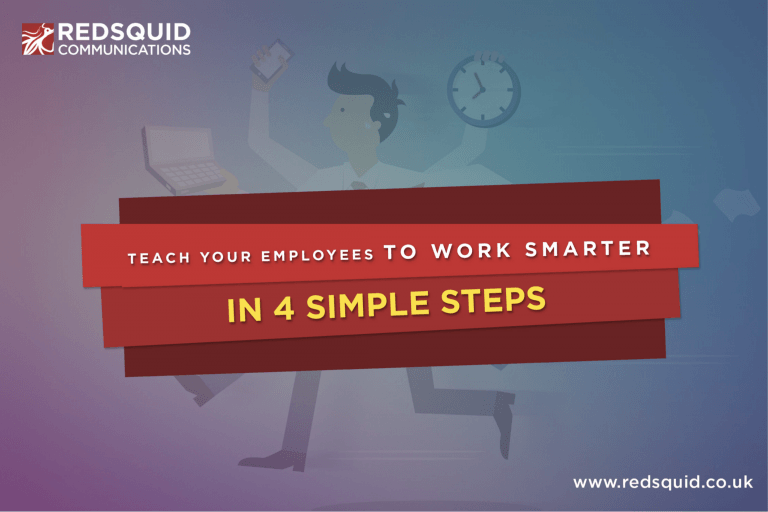Teach Your Employees to Work Smarter in Four Simple Steps
Previously, we covered how to improve employee productivity levels , but boosting productivity also requires an effective approach to organisation. The key here is to work smarter, not necessarily harder; and knowing how to manage your employees’ workload can save your staff hours of otherwise wasted time.
Here are several ways that you can teach your employees to more effectively organise their tasks, and subsequently, become more productive.

Plan
Planning your workload is the first essential step towards having good organisation. Different planning methods work for different people; much of this depends on how your mind processes information.
For example, if some of your employees are happy to hold on to details, then organisational techniques like the Kanban method may work better for them. The Kanban method involves writing down the most basic version of a task, and placing it on a larger collective space; such as a cork board. Doing this will enable staff-members to keep track of the things they need to do, all whilst being aware of the bigger picture.
However, if others prefer to have all the necessary details laid out for them, then the ‘Getting Things Done’ (or GTD) method may work better. This technique often works best with task-management and collaboration apps; like Asana. By placing all essential tasks alongside the relevant information, staff will have more support, and thus more control.
Prioritise
Prioritising is the most important part of organising your workload. Knowing what needs to be done first, will enable your employees to successfully keep on top of everything. Their most important tasks will depend upon your business, their role, and what you value, as well as whether they have a set deadline.
Once your staff have gotten a better idea of what their most important tasks are, they’ll need to prioritise them alongside everything else. There’s a method of task organisation called ‘Time Blocking’; this refers to using a physical or digital calendar to sort your tasks into set dates. Time Blocking their important tasks into set dates, will enable employees to prioritise what needs to be done in a more visible way.
It’s a good idea to place the most important tasks at the very start of the work day; not only because studies show that we’re most productive in the morning, but also because getting these important tasks out of the way will improve your employees’ sense of achievement, motivate them, and improve their mood in general.
Predict
Encouraging your staff to be aware of what they’re capable of achieving, and making them adapt to that, is an essential part of having an organised workforce. Setting realistic deadlines and goals, is a critical step all employees need to take.
Your workforce should first outline their workload: an effective way of doing this is to break-down larger projects into more manageable tasks: e.g. to complete a business plan; anticipate potential set-backs, predict monthly turnovers etc. Doing this will give your employees a better idea of how much time they realistically need to complete projects.
Being able to accept the realistic is an important characteristic that your workforce should have. Setting yourself up for potential disappointment is a dangerous game to play; therefore your employees should be able to accept what they can do, therefore avoiding potential set-backs, and improving their mood.
Focus
Staying focused is a critical part of staying organised.
Obviously, things are going to turn up whether employees can anticipate them or not. But encouraging them to adapt their plans, rather than disrupt then, can save them a lot of trouble. It means that they’re not letting your other tasks fall by the wayside, but simply rescheduling them to when they can be completed.
Try to discourage excessive multi-tasking. Employees should be able to avoid this by having already set their tasks to select dates. However, if employees are experiencing fatigue, or hitting creative blocks, then they should try re-shuffling things around a bit. It may improve their productivity levels and overall mood.
Following these steps should set your workforce on the right path to productivity. For more tips on how to effectively run your business, read about how you can boost employee productivity, and how unified communications can improve your customer service.
Want to share it with your friends?
